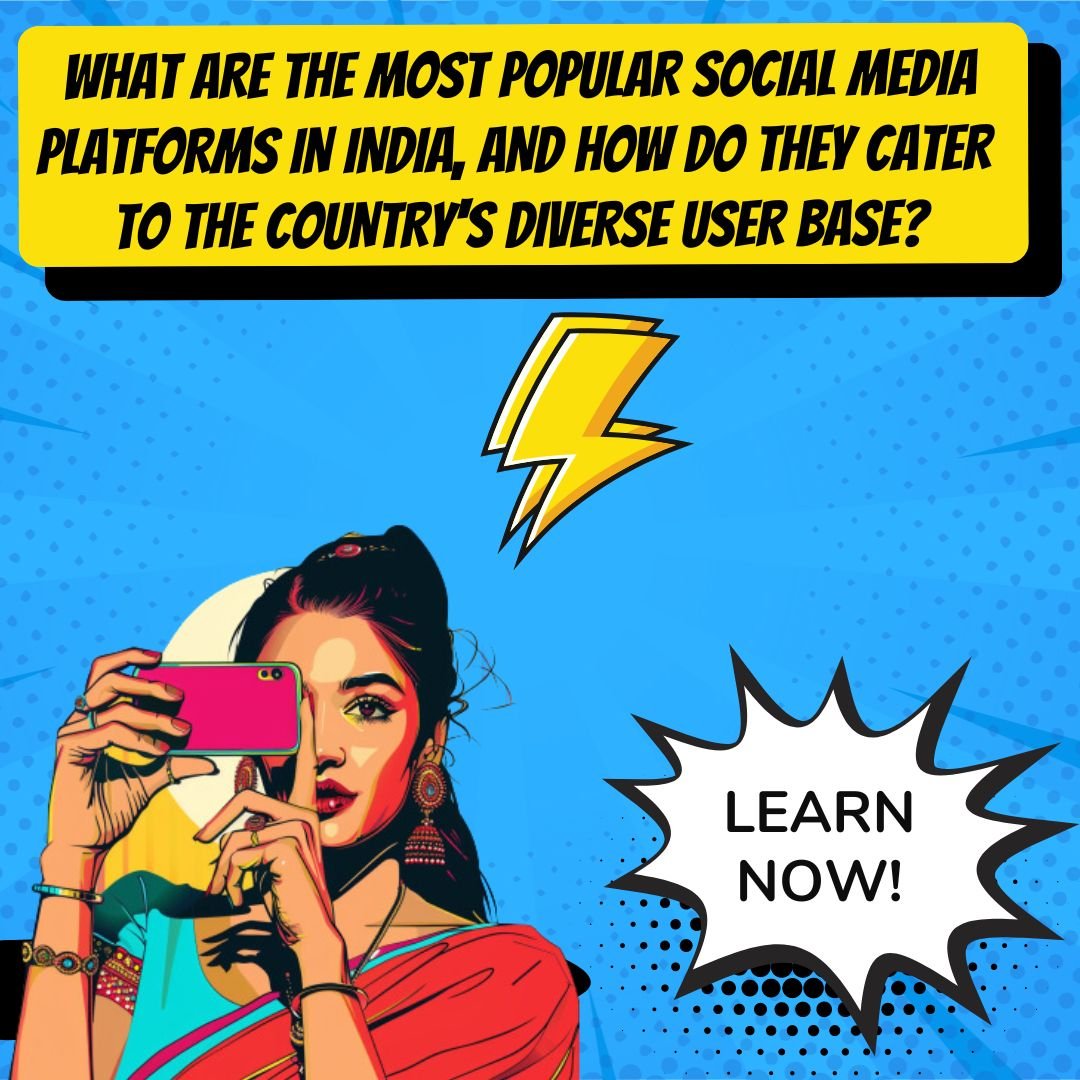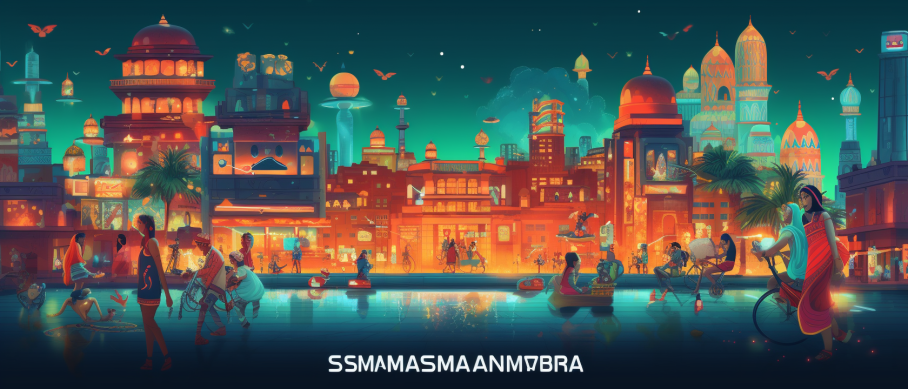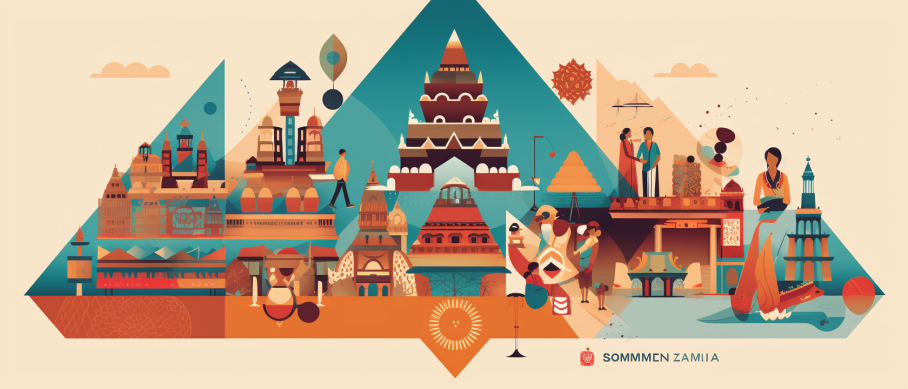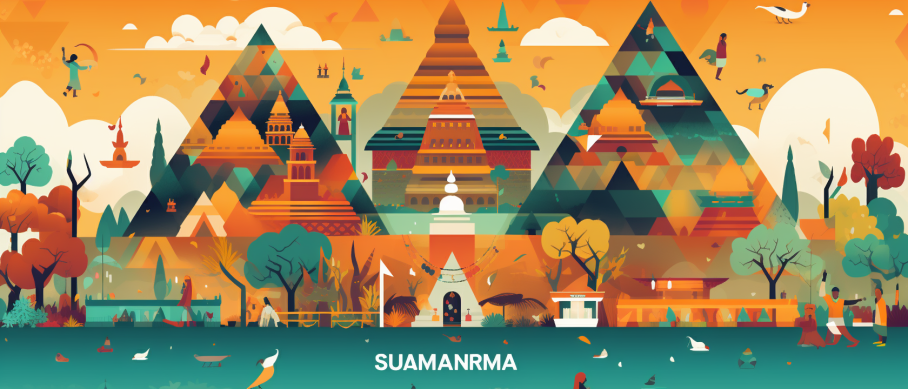Key Takeaways
✅ Diverse Social Media Landscape: Did you know that India has over 448 million social media users? This hefty figure reflects a rich tapestry of online communities, each thriving with its own customs and conversations. Grasping this variety is indispensable for marketers and content creators aiming to make a genuine impact.
✅ Popular Platforms: Facebook and WhatsApp reign with an iron grip in India, boasting user numbers north of 400 million each. However, newer entrants like Instagram are fast gaining ground, especially among the younger crowd. This shifting tide is something businesses must sail skillfully for better customer reach.
✅ Cultural Nuances: It's not just about numbers. Content that strikes a chord with India's heart involves mastering the subtle art of cultural resonance. Did you consider that vernacular content can drive 2x more engagement? It's such cultural intelligence that can spell triumph or disaster for your brand's Indian story.

Introduction
Ever wondered why the deep flavors of India's social media landscape stir up a feast for marketers and storytellers alike? Imagine a world where every scroll, click, and share captures the vibrant essence of India's diverse culture - that's the Social Media Samosa for you!
Intrigued? We’re about to guide you through the bustling streets of India’s social media bazaar, unveiling strategies that could maximize your return on ad spend (ROAS) and return on investment (ROI). Stick around; this journey will leave you with enlightening insights and practical tips to ensure your brand doesn't just visit but thrives in India's social media space.
Top Statistics
| Statistic | Insight |
|---|---|
| Social Media Users: India has around 450 million social media users from a total of 696 million internet users as of January 2021. (Source: Statista) | This huge user base signals a vibrant digital ecosystem, with ample opportunities for businesses to connect with consumers. |
| Leading Platforms: WhatsApp and Facebook lead with 400 million and 340 million monthly active users, respectively. (Source: Business Insider, Statista) | These platforms dominate the social scene, potentially offering the widest reach for marketing campaigns in India. |
| User Demographics: A majority of 65% male users and a dominant age group between 18 and 34. (Source: Statista) | Understanding demographic breakdown can help tailor content and advertising to engage the most active user groups. |
| Industry Growth: The social media advertising market in India is expected to reach $1.82 billion in 2021. (Source: eMarketer) | There is a rapid growth in digital ad spend, indicative of the social media's increasing influence on consumer behavior. |
| Influencer Marketing: Expected to grow to a market size of $2.28 billion by 2025. (Source: Influencer Marketing Hub) | Collaboration with influencers could be a key strategy for brands seeking to amplify their presence and credibility on social platforms. |
The Rise of Social Media in India
In recent years, India's social media usage has skyrocketed, becoming an integral part of the daily lives of millions. With a population of over 1.3 billion, the country presents a vast landscape where every social platform vies for attention. Effective communication now requires a nuanced understanding of the varied platforms and how they fit into the cultural mosaic that is India. Unique preferences and the sheer volume of users have shaped the Indian social media space into a dynamic and diverse arena that brands and marketers must navigate with care and insight.
Facebook: The Dominant Player
Facebook reigns supreme as the go-to platform for social connection in India, boasting a staggering user count of over 340 million. This figure signifies a wealth of opportunities for marketers who seek to tap into a broad demographic. Indian Facebook users often range from young adults to those in their forties, making it imperative for content creators to tailor messages that resonate across age groups. To engage effectively, one must blend creativity with relatable narratives that strike a chord with this diverse audience.
Instagram: The Visual Storyteller
Instagram, with its focus on imagery and aesthetics, has fast become a beloved platform among India's younger demographics. Engagement metrics such as likes, comments, and shares are the currency of Instagram's domain, and navigating its algorithm requires a keen understanding of visual storytelling. To rise above the noise, content creators must embrace authenticity and a flair for eye-catching graphics that speak to a user's aspirational side, ensuring a steady growth in followers and brand loyalty.
WhatsApp: The Messaging Giant
WhatsApp stands as a colossus in India's communication landscape, serving as a hub for personal and business exchanges alike. With so many looking to this platform for fast and personal communication, businesses have found value in creating targeted WhatsApp groups and broadcast lists to keep their audience informed and engaged. Effective use of WhatsApp necessitates a delicate balance between friendliness and professionalism, optimizing content for quick, mobile-centric consumption.

Twitter: The Real-Time Conversation Hub
Twitter has carved out a niche in hosting real-time conversations and serving as a pulse for the nation's trending topics. Connecting with the platform's influencer community can amplify a brand's message, while engaging with hashtags helps to remain relevant and visible. Crafting succinct and impactful messages on Twitter can lead to significant engagement and brand presence, particularly when content is timely and taps into the heartbeat of national interests or events.
Regional Platforms: Tapping into Local Communities
With the rise of regional languages on digital platforms, local social media networks like ShareChat and Helo have grown in popularity. Localization and cultural nuances are crucial for brands that wish to resonate with regional audiences. Tailoring content for these platforms requires an intimate understanding of local languages, customs, and interests. Campaigns that succeed here often draw upon regional insights to build authenticity and community around a brand or message.
Navigating India's ever-changing social media landscape is no easy task, with each platform presenting unique challenges and opportunities. Staying abreast of platform updates and evolving user behaviors is essential for any marketer or communicator aiming to remain relevant in this dynamic environment. Understanding the intricacies of the Indian social media world is not just about leveraging platforms; it's about embracing and celebrating the rich tapestry of cultures that breathe life into the digital conversations of today.

AI Marketing Engineers Recommendation
Recommendation 1: Leverage Localized Content on Regional Platforms: With India's diversity in language and culture, crafting content tailored to local dialects and socio-cultural contexts can drastically improve engagement. A study by KPMG and Google found that regional language users are expected to account for nearly 75% of India's internet user base by 2021. Thus, utilizing platforms like ShareChat, which offers content creation in 15 Indian languages, can help businesses connect more authentically with audiences across regions. Reap the rewards by adapting your messaging to suit the cultural nuances and languages of the platform's user base.
Recommendation 2: Utilize Video Content on Emerging Platforms: Video content has proven to be highly engaging and shareable, especially short-form videos. According to a Cisco study, video traffic will be 82 percent of all consumer internet traffic by 2022, up from 73 percent in 2017. Capitalize on this format's popularity by leveraging platforms such as Roposo and Chingari, which are grabbing eyeballs with their short-video offerings. Create concise, compelling videos that cater to the fast-paced consumption habits of Indian users, especially the youth, to increase visibility and engagement.
Recommendation 3: Apply AI-Based Analytics for Customer Insights: Investing in AI-driven analytics tools like super.AI or HubSpot can help you decipher the massive amounts of data generated by social media interactions. Utilize these tools to gain insights into consumer behavior, content performance, and user engagement on platforms specific to the Indian market. For instance, better understanding the peak usage times and content preferences on Koo, a local microblogging platform, could empower a more effective and targeted marketing strategy, making every post count.
Relevant Links
- Elevate Your Digital Marketing Game with Advanced AI
- Master Affiliate Marketing in 2024: Passive Income Made Easy
- Choosing the Best AI Marketing Tools for Your Business in 2024
- Unleashing the Power of ChatGPT for Creative and Engaging Content
- Navigating the Intricacies of SEO: Enhance Online Presence and Reach
Conclusion: Embracing India's Diverse Social Media Landscape
To wrap it up, venturing through India's social media sphere is like savoring a plate of samosas, each with a distinct flavor, representing the various platforms that cater to a vibrant user base. Facebook, still the big cheese, hosts a massive audience in India; a fertile ground for stirring content that resonates with users across ages and regions. Instagram, with its emphasis on visuals, continues to charm users and brands alike, underscoring the power of images in telling captivating stories.
WhatsApp has woven itself into the very fabric of Indian communication—especially in the business world—replacing traditional methods with its swift messaging facilities. On the flip side, Twitter's fast-paced environment taps into the pulse of the nation, capturing real-time conversations and trending topics.
But let's not forget the homegrown heroes, the regional platforms that create intimate circles of communication, reflective of India's cultural tapestry. They are not merely digital spaces but represent a testament to localization's prowess in connecting deeply with users.
As social media continues to evolve in India, the stats and stories shared in this piece remind us of a simple, yet profound truth: the landscape is burgeoning, and with the right strategy, brands and individuals can create meaningful, lasting connections with their audiences.
Whether you're a business, a content creator, or simply an avid participant in the social media dialogue, staying abreast of platform updates and trends is key to your digital success. The future of social media in India? It's as promising and dynamic as the country itself. So, are you ready to dive into this digital masala and spice up your social media strategy?

FAQs
Question 1: What is Social Media Samosa?
Answer: Social Media Samosa is a comprehensive guide that provides insights into India's diverse social media platforms, their features, trends, and best practices for enthusiasts and professionals.
Question 2: Why is Social Media Samosa important for social media enthusiasts and professionals in India?
Answer: Social Media Samosa is crucial for staying updated on the latest trends, understanding the unique aspects of Indian social media platforms, and developing effective strategies for engaging with local audiences.
Question 3: What are the most popular social media platforms in India?
Answer: Some of the most popular social media platforms in India include WhatsApp, Facebook, Instagram, YouTube, Twitter, and LinkedIn, among others.
Question 4: How can I create an effective social media strategy for India's diverse platforms?
Answer: To create an effective social media strategy, consider factors such as your target audience, platform-specific features, local cultural nuances, and the latest trends. A mix of organic and paid content, engaging visuals, and localized content can help you reach and engage with your target audience.
Question 5: What are the key differences between social media platforms in India and other countries?
Answer: Social media platforms in India often have unique features and user behaviors due to cultural, linguistic, and technological differences. For example, WhatsApp is widely used for business communication, and regional languages are more prevalent on platforms like Facebook and Twitter.
Question 6: How can I measure the success of my social media campaigns in India?
Answer: Measuring the success of your social media campaigns in India involves tracking key performance indicators (KPIs) such as engagement rates, reach, impressions, conversions, and ROI. Use platform-specific analytics tools and third-party software to monitor your campaigns and make data-driven decisions.
Question 7: What are some common social media marketing mistakes to avoid in India?
Answer: Common social media marketing mistakes to avoid in India include ignoring local cultural nuances, not optimizing content for regional languages, relying solely on English, and failing to adapt to platform-specific features and trends.
Question 8: How can I stay updated on the latest social media trends and best practices in India?
Answer: Stay updated on the latest social media trends and best practices in India by following industry experts, joining social media communities, attending conferences and webinars, and regularly reading industry publications and blogs.
Question 9: What are some examples of successful social media campaigns in India?
Answer: Some successful social media campaigns in India include the #ShareTheLoad campaign by Ariel, #MyFamilyMyPride by Star Bharat, and #BefikarUmarBhar by Tata Sky. These campaigns effectively leveraged local cultural nuances, platform-specific features, and engaging content to connect with their target audience.
Question 10: What are the emerging social media platforms in India that I should keep an eye on?
Answer: Some emerging social media platforms in India that you should keep an eye on include ShareChat, Roposo, and Koo, which are gaining popularity due to their focus on regional languages and localized content.

Academic References
- Vishal, R., & Bhat, M. S. (2017). Social Media Use in India: Rising Trends in Digital Technology. International Journal of Multidisciplinary Approach & Studies, 4(1). This paper offers a deep dive into the growth of social media in India and its broad impacts on society, politics, business, and personal connections, emphasizing the necessity to grasp the cultural and social context within which social media operates in India.
- Kumar, R. (2018). Social Media in India: A Study on Usage Patterns and Influence on Youth. International Journal of Engineering & Technology, 7(2.2). Dr. Kumar's study breaks down how Indian youth interact with social media platforms, identifying which platforms resonate most, while also scrutinizing the inherent risks and advantages of social media use among the younger demographic.
- Kumar, S. (2019). Social Media and Political Communication in India: A Study of Facebook, Twitter, and WhatsApp. Asian Journal of Communication, 29(4). Dr. Sanjay Kumar evaluates the role social media platforms play in shaping political discourse in India, probing the influence on political attitudes and behaviors, as well as the regulatory challenges posed by social media usage in the nation.
- Gupta, P., & Kumar, A. (2020). The Changing Landscape of Social Media in India: A Study of Emerging Trends and Platforms. International Journal of Advanced Research in Management and Social Sciences, 9(1). This paper maps out the evolving terrain of social media in India, spotlighting the rise of indigenous platforms and the growing prominence of video content, advocating for a refined comprehension of the variegated social media ecosystem in India.








